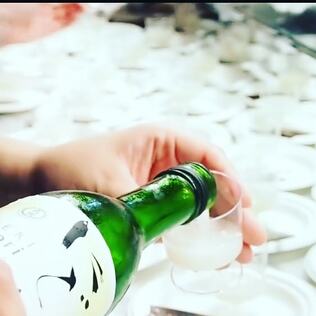 What a great start for 2019. Our first sake basics workshop went off with a hit! Guests arrived diligently to the venue to welcome the lovely scenery of swan valley at the cheese barrel. We welcome Ozeki Sake Brewery from USA and Japan showcasing : Hana-awaka Sparkling Sake Rai Junmai Tokubetsu Yamadanishiki Junmai Platinum Daiginjo Nigori Sake New sake lovers having being their first time and experience in a learning environment were excited on what the event would hold. Sake process with the main ingredients used for sake making , water , yeast , koji and rice each play a important role for sake making. Understanding the appreciation for each ingredient from polishing the rice to the cooking of the rice. Opening up the the first interactive activity we introduce Hana-awaka Sparkling this beautiful elegant sparkling sake capture our guest hearts. Aroma of lovely sweetness with vanilla creaminess guest were intrigue of this bubbly brew. Guidance on how to concentrate on the aromatics of the sake mostly yeast driven and followed with a guide understanding how to taste. Drinking sake correctly allows you to savour the flavours on the palate longer. Sake is to drunk in sipping action each time the layers of flavour will combine together to create . Following we needed guest to understand about sake etiquette and sake culture. The topic opened by a special demonstration to make guest understand the Japanese tradition . Two guest volunteer, for this demonstration, each guest at first had to pour for each other not by themselves. “The tradition of pouring for others and not directly for yourself is an act of politeness in Japanese culture, It “creates interactions between the people in attendance, allowing both the sake and conversation to flow.” “  Someone must pour for you, and ideally you must pour for others,” The Japan Times explains. “This act is known as shaku suru or kumu.” Adopting the custom when sharing sake stateside is good manners, akin to keeping elbows off the table. Filling others’ glasses also accelerates the natural bonding that occurs when people break bread or share a drink. Mark Fukushima also demonstrated in extra detail when you know the opposite party is a bit older you cheers or kanpai ocohoko must be abit lower than the older one as a sign of respect. Guest felt a stronger appreciation to the customs. Cold vs Room This interactive activity was quite the highlight, as it really open up an broaden sake guests mindset on what they perceive they thought about sake. The cold vs room comparison allowed guest to experience the character change they can encounter to find the best taste at the best temperature themselves. We had majority liking the room temperature feel because the acidity was too high and mouthfeel was more smoother. Some guest liked the clean and smooth freshness texture feel on the palate each sake represented different characters and guest all had different experience. We acknowledge everybody has different palate experience so we don't judge sake all the same way. Guest left with full hearts and smiles and a closer appreciation to the sake world we hope to see more new sake lovers in our next workshop. Kanpai
0 Comments
Leave a Reply. |
Categories |
© COPYRIGHT 2021 ALL RIGHTS RESERVED.





 RSS Feed
RSS Feed